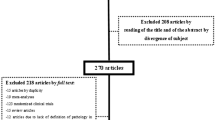Abstract
Tuberculosis reactivation is a serious threat in patients treated with anti-tumour necrosis factor therapy. A 6-month regimen with isoniazid is considered as the standard of care, but patient adherence is a major shortcoming. We carried out an open-label, single-arm intervention study to assess the efficacy, the completion rate and the tolerability of a 3-month regimen with isoniazid plus rifampin. Seventy-eight patients with rheumatic conditions proposed for anti-tumour necrosis factor (TNF) therapy and at risk of tuberculosis reactivation were offered to participate in the study. Nine patients were excluded due to deficit of glucose-6-phosphate dehydrogenase (n = 1), salicylate hypersensitivity (n = 1), declining to participate (n = 5) or preferring a 6-month isoniazid regimen (n = 6). Sixty-nine patients were treated with a 3-month regimen with isoniazid and rifampin. No cases of tuberculosis were observed after a mean follow-up of 90 months (range from 66 to 121 months). Sixty (87 %) patients completed the therapy. Nine (13 %) patients discontinued the therapy due to rifampin hypersensitivity (n = 1), symptomatic grade 3–4 hepatotoxicity (n = 2), abdominal discomfort (n = 2), pruritus (n = 1), arthritis (n = 1) and personal concerns (n = 2). A short course treatment with isoniazid and rifampin provided efficacy, good tolerability and good completion rate in patients with rheumatic conditions proposed for anti-TNF therapy.

Similar content being viewed by others
References
Keane J (2005) TNF-blocking agents and tuberculosis: new drugs illuminate an old topic. Rheumatology 44:714–720
Gardam MA, Keystone EC, Menzies R et al (2003) Anti-tumour necrosis factor agents and tuberculosis risk: mechanisms of action and clinical management. Lancet Infect Dis 3:148–155
Winthrop KL, Siegel JN, Jereb J, Taylor Z, Iademarco MF (2005) Tuberculosis associated with therapy against tumor necrosis factor alpha. Arthritis Rheum 52:2968–2974
British Thoracic Society Standards of Care Committee (2005) BTS recommendations for assessing risk and for managing Mycobacterium tuberculosis infection and disease in patients due to start anti-TNF-alpha treatment. Thorax 60:800–805
Kwara A, Herold JS, Machan JT, Carter EJ (2008) Factors associated with failure to complete isoniazid treatment for latent tuberculosis infection in Rhode Island. Chest 133:862–868
Shieh FK, Snyder G, Horsburgh CR, Bernardo J, Murphy C, Saukkonen JJ (2006) Predicting noncompletion of treatment for latent tuberculous infection: a prospective survey. Am J Respir Crit Care Med 174:717–721
Ailinger RL, Black P, Nguyen N, Lasus H (2007) Predictors of adherence to latent tuberculosis infection therapy in Latino immigrants. J Community Health Nurs 24:191–198
Ena J, Valls V (2005) Short-course therapy with rifampin plus isoniazid, compared with standard therapy with isoniazid, for latent tuberculosis infection: a meta-analysis. Clin Infect Dis 40:670–676
World Health Organization (1992) International monitoring of adverse reactions to drugs: adverse reaction terminology. WHO Collaborating Center for International Drug Monitoring, Uppsala
Anonymous (2000) Targeted tuberculin testing and treatment of latent tuberculosis infection. Joint Statement of the American Thoracic Society (ATS) and the Centers for Disease Control and Prevention (CDC). Am J Respir Crit Care Med 161:S221-247
Gómez-Reino JJ, Carmona L, Descalzo MA, Biobadaser Group (2007) Risk of tuberculosis in patients treated with tumor necrosis factor antagonists due to incomplete prevention of reactivation of latent infection. Arthritis Rheum 57:756–761
Li J, Munsiff SS, Tarantino T, Dorsinville M (2010) Adherence to treatment of latent tuberculosis infection in a clinical population in New York City. Int J Infect Dis 14:e292–e297
Ngamvithayapong J, Uthaivoravit W, Yanai H, Akarasewi P, Sawanpanyalert P (1997) Adherence to tuberculosis preventive therapy among HIV-infected persons in Chiang Rai. Thailand AIDS 11:107–112
Rennie TW, Bothamley GH, Engova D, Bates IP (2007) Patient choice promotes adherence in preventive treatment for latent tuberculosis. Eur Respir J 30:728–735
Hanta I, Ozbek S, Kuleci S, Sert M, Kocabas A (2007) Isoniazid intervention for latent tuberculosis among 86 patients with rheumatologic disease administered with anti-TNFalpha. Clin Rheumatol 26:1867–1870
Mor A, Bingham CO 3rd, Kishimoto M, Izmirly PM, Greenberg JD, Reddy S, Rosenthal PB (2008) Methotrexate combined with isoniazid treatment for latent tuberculosis is well tolerated in patients with rheumatoid arthritis: experience from an urban arthritis clinic. Ann Rheum Dis 67:462–465
Yun JW, Lim SY, Suh GY, Chung MP, Kim H, Kwon OJ, Cha HS, Koh EM, Koh WJ (2007) Diagnosis and treatment of latent tuberculosis infection in arthritis patients treated with tumor necrosis factor antagonists in Korea. J Korean Med Sci 22:779–783
Macintyre CR, Goebel K, Brown GV (2005) Patient knows best: blinded assessment of nonadherence with antituberculous therapy by physicians, nurses, and patients compared with urine drug levels. Prev Med 40:41–45
Keane J, Gershon S, Wise RP, Mirabile-Levens E, Kasznica J, Schwieterman WD, Siegel JN, Braun MM (2001) Tuberculosis associated with infliximab, a tumor necrosis factor alpha-neutralizing agent. N Engl J Med 345:1098–1104
Acknowledgement
We thank our colleagues from the Rheumatology Department for collaborating in the study, referring the patients for evaluation for tuberculosis infection to the Preventive Medicine Service prior to start the anti-tumour necrosis factor therapies.
Author contributions statement
“Drs Valls and Ena had full access to all of the data in the study and take responsibility for the integrity of the data and the accuracy of the data analysis. Dr Valls took part in acquisition of data. Drs Valls and Ena had role in study design, analysis, interpretation of data, and drafting of the manuscript.” was deleted. Kindly check if this is appropriate.
Disclosures
None.
Author information
Authors and Affiliations
Corresponding author
Rights and permissions
About this article
Cite this article
Valls, V., Ena, J. Short-course treatment of latent tuberculosis infection in patients with rheumatic conditions proposed for anti-TNF therapy. Clin Rheumatol 34, 29–34 (2015). https://doi.org/10.1007/s10067-014-2495-4
Received:
Revised:
Accepted:
Published:
Issue Date:
DOI: https://doi.org/10.1007/s10067-014-2495-4




